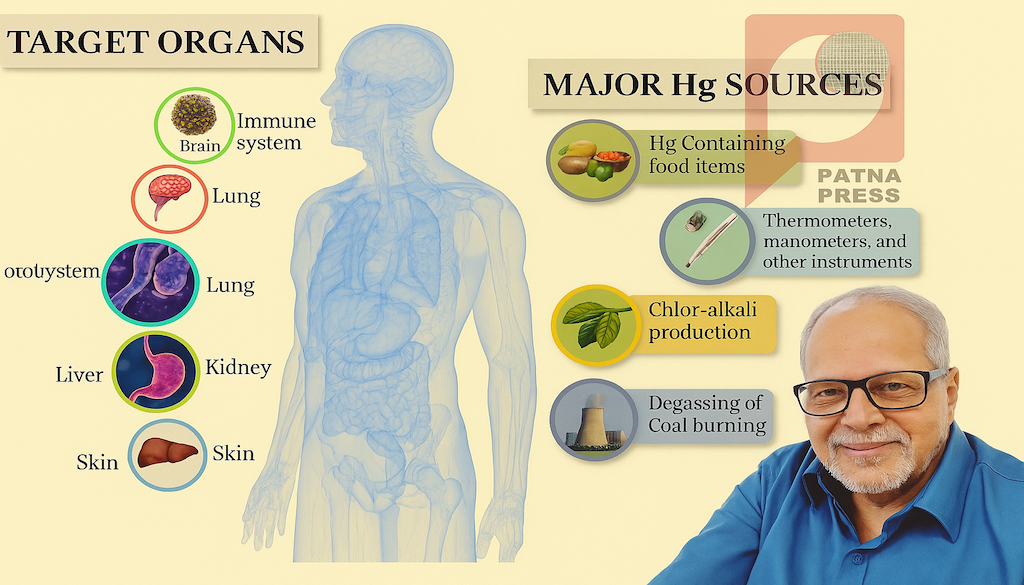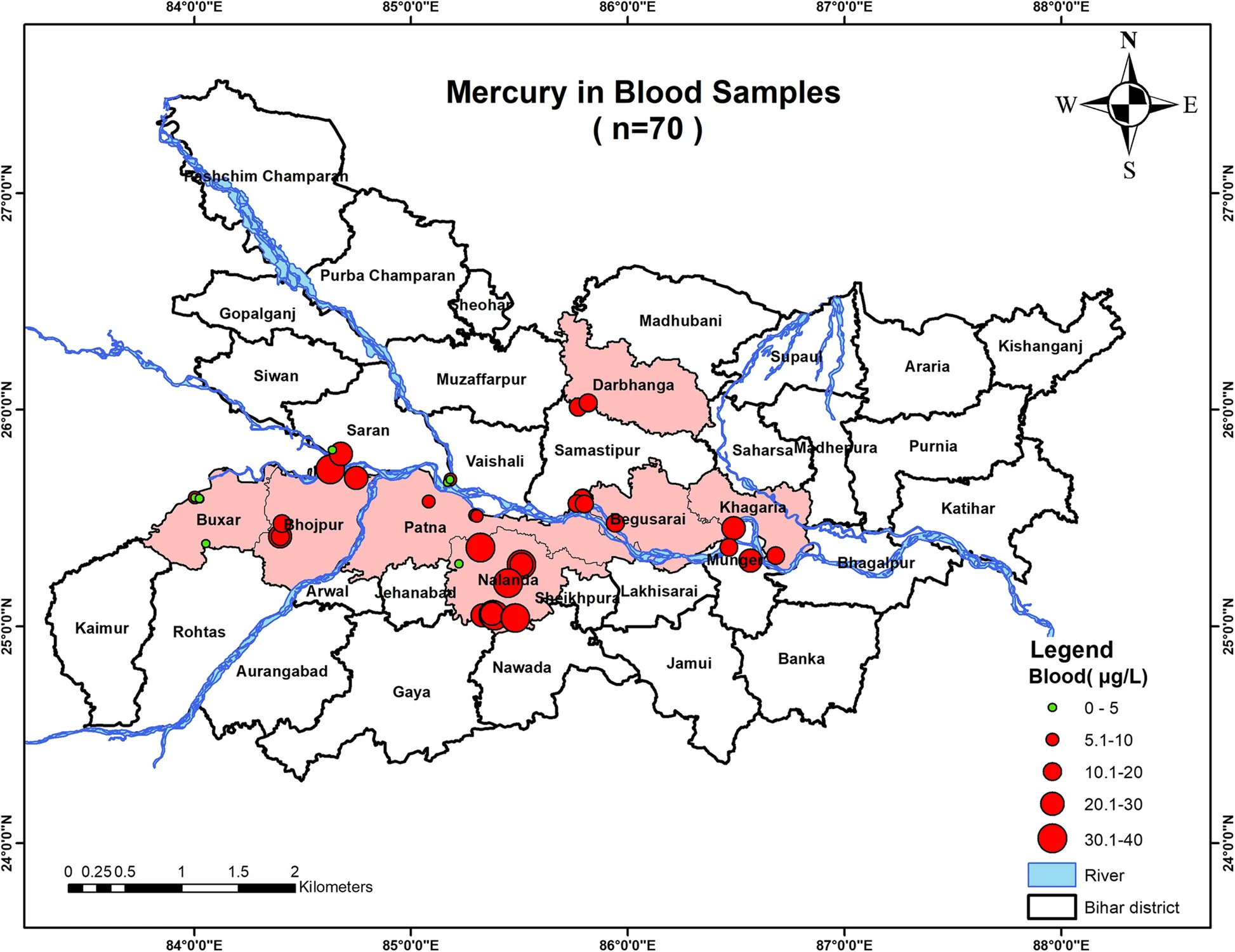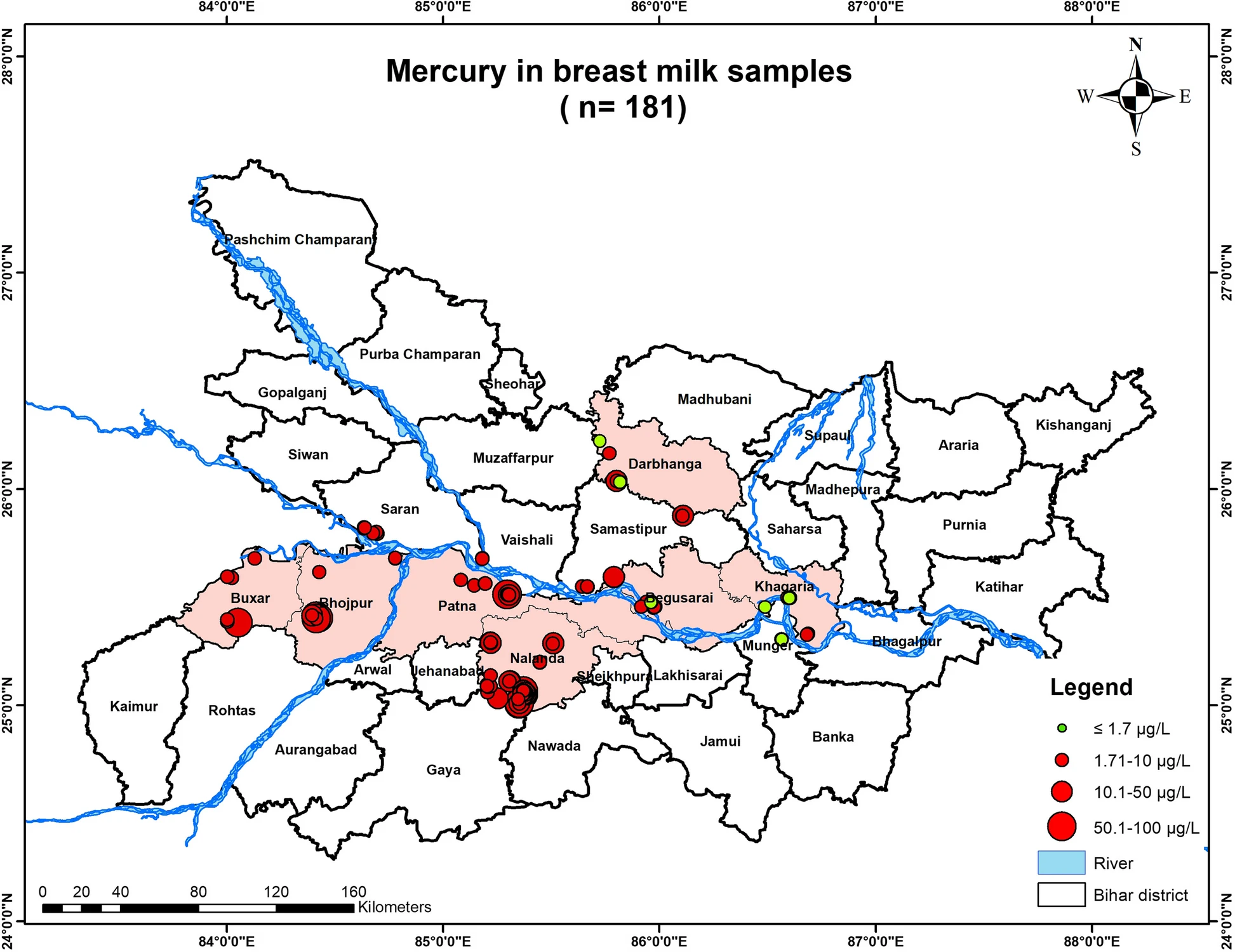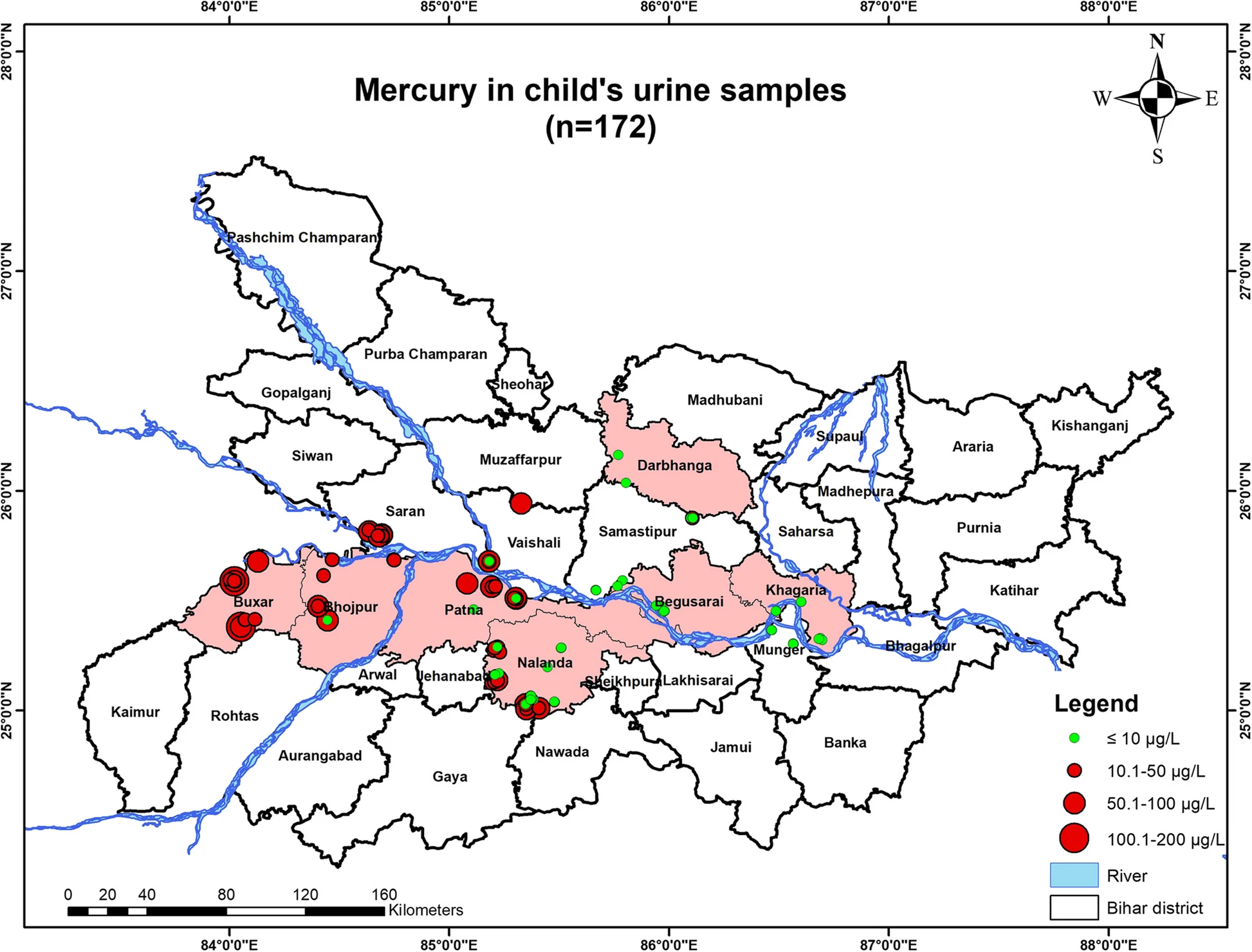The Silent Poison Beneath: How Mercury-Laced Water Is Endangering Lives in Rural Bihar
A public health crisis is unfolding in parts of Bihar—not with the loud clang of calamity, but with the quiet drip of a hand pump. A new study co-authored by Dr Ashok Ghosh of Mahavir Cancer Institute, Patna has found dangerously high levels of mercury in groundwater across at least seven districts in Bihar, raising urgent public health concerns.

Patna: In the fertile plains of Bihar, where the Ganges nourishes both the land and the people, a toxic danger is lurking beneath the surface. A newly published scientific study has uncovered mercury contamination in the groundwater of seven districts—posing a serious, yet largely unacknowledged, public health threat to thousands of rural residents.
The peer-reviewed study, co-authored by Dr Ashok Ghosh, Professor and Head of Research at Mahavir Cancer Institute and Research Center in Patna, was published in BMC Public Health, a respected international journal focused on health challenges across global populations. The findings point to widespread contamination across seven districts—Buxar, Bhojpur, Patna, Nalanda, Begusarai, Khagaria, and Darbhanga—out of a total of 11 districts surveyed.
“What we are witnessing is not merely contamination, but a long-term health disaster unfolding slowly, in silence,” Dr Ghosh told PatnaPress. “Mercury is highly toxic even at low concentrations. Its effects accumulate over time, and for communities dependent on groundwater, there is no easy escape.”
Dr Ghosh has long been a prominent voice in Bihar’s battle against water contamination. His researches have helped expose the arsenic, manganese and lead crisis in the region. Now, mercury—another heavy metal known for its neurotoxic effects—has emerged as the next invisible threat.
Mercury in the Veins of Bihar

The research team conducted an extensive study combining water quality sampling and household health surveys. The affected areas showed mercury levels exceeding the World Health Organization’s safety threshold of 0.001 mg/L in several samples. In these districts, symptoms linked with chronic mercury exposure—including memory loss, tremors, joint pain, fatigue, and gastrointestinal issues—were commonly reported.
While previous studies have spotlighted arsenic contamination in the Gangetic belt, this is the first large-scale effort that has uncovered mercury as a parallel hazard. What makes the findings more troubling is that these toxic elements are often undetectable without laboratory testing—making the danger invisible to those consuming the water daily.
“Many people don’t even know mercury could be in their drinking water,” said Dr Ghosh. “They associate hand pumps with purity. But these results challenge that assumption in the most disturbing way.”
Industrial Waste or Nature’s Fault?

The source of the mercury contamination remains unclear, though the study outlines two potential causes. One possibility is anthropogenic, or man-made, such as industrial effluents from poorly regulated medical and manufacturing waste. The other is geogenic, linked to natural geological formations that leach mercury into groundwater through weathering processes.
Bihar, especially regions like Patna and Begusarai, has witnessed unregulated urban expansion and increasing industrial activity, which may have exacerbated groundwater pollution.
But whatever the source, the effect is evident—and dangerous.
Seven Districts at Risk, But the Clock Is Ticking

Buxar and Bhojpur, both located along the Ganges, recorded some of the highest mercury concentrations. In Koilwar block of Bhojpur, villagers like 42-year-old Kusum Devi report mysterious symptoms: shaking hands, fatigue, and persistent memory lapses in her husband. “Doctors don’t have answers. We drink the same water our parents drank, but something is not right,” she says.
Similar reports emerged from households in Darbhanga and Khagaria, where access to piped drinking water remains negligible, forcing residents to rely on deep-bore hand pumps.
The research findings call for urgent intervention—beginning with expanded water quality monitoring, community awareness drives, and accessible clean water alternatives.
“Not Just an Environmental Issue, But a Human One”
The study recommends government-led efforts to map groundwater quality, identify contamination hotspots, and deploy cost-effective filtration solutions. Methods such as activated carbon filtration, reverse osmosis, and even phytoremediation—using mercury-absorbing plants—are cited as potential mitigation strategies.
“This is not just an environmental issue—it is a human issue,” Dr Ghosh emphasised. “Mercury affects the brain, kidneys, and even developing foetuses. Every delay in action increases the risk for those already exposed.”
Mercury contamination is a global concern—from illegal gold mining in Latin America to industrial discharges in China—but in Bihar, the threat is compounded by poverty and poor infrastructure.
“This is Bihar’s moment to act,” Dr Ghosh said. “Because what’s happening beneath our feet is already changing lives—and not for the better.”





